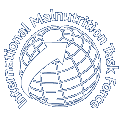Undernutrition—Looking Within for Answers
By David A. Relman
A link between the gut microbiota and conditions of undernutrition point to possible therapeutic interventions.
EXCEPTS
Undernutrition—a condition resulting from inadequate intake or assimilation of nutrients—underlies more than one-third of all deaths worldwide in children younger than 5 years of age (1). Enteric infectious disease and undernutrition exacerbate and perpetuate each other by means of impaired innate and adaptive immune responses. Together they produce an insidious condition called environmental enteropathy in which damaged gut mucosal architecture and function are associated with malabsorption, dysregulation of mucosal permeability, and inflammation. This vicious cycle leaves approximately one-fifth of children in the world stunted, and leads to a wide range of continuing health and developmental problems, possibly including cognitive impairment and metabolic syndrome in adulthood (2). Maternal malnutrition brings about malnutrition in their children [shockingly, nearly one-third of women in Bangladesh (3), as well as in other countries with similar levels of poverty, suffer from this condition]. These multiple, interwoven, and mutually reinforcing factors pose major challenges for efforts to address this situation.
Link to Science Journal website for full article
